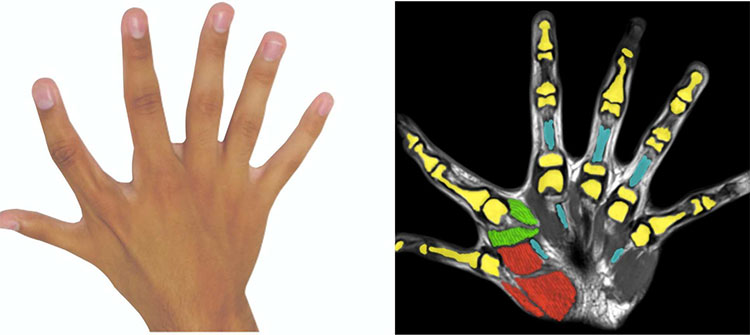There are 6 useless fingers like doctors thought
It is not uncommon for children to be born with fingers or toes. This mutation is called polydactyly, the rate of 1/500 children will suffer from this abnormality.
For a time, many people thought it was redundant and even useless, so the leftovers were often amputated shortly after birth. But as new research has shown, they may not be as bad as we thought after all.

People with 6 fingers rated tend to be "more skillful" than usual.
A new study of people with 6 fingers can still play phones, play complex video games and even tie them all with one hand.
Biologist Etienne Burdet of the Royal College of London notes: "Traditional fingers and toes are considered to be a birth defect, so no one thinks that studying them is really useful. Anybody? '
In fact, excess fingers and toes have their own bone, tendon and muscle structure, all integrated into the entire structure of the hand, so doctors don't just have to remove the outside, but The structure will have to be completely removed if cut off.
However, new research reveals an impressive new information. In the case of a 52-year-old mother and 17-year-old son, the limbs are well formed and fully developed. Both were born with an extra finger between the thumb and forefinger. Especially on both hands.
This gives the team a great opportunity to answer some conundrums about polydactyly.
"First, is the movement of the additional finger activated by the muscles of the other fingers, or does it have muscles and nerves separately?" researchers ask questions.
Second, how does the extra finger independent compared to other fingers? Is it moving along with the movement of ordinary fingers, like the little finger and ring finger, or does it move independently of the other fingers like the thumb?
Researchers also want to know if operating an additional finger on each hand makes the brain work harder, detrimental to the entire cognitive function.
Therefore, they devised a series of tasks to bring the skills of the subjects into experiment. This includes custom video games using standard computer keyboards and object manipulation tasks, such as tying shoelaces, turning pages and folding napkins. They are compared with 13 5-finger controls that perform similar tasks.
The researchers found that polydactyl objects are more dexterous than five-finger controls, able to move their supersonic fingers independently of other objects, with a finger-like motion range. what.
"The brains of polydactyl individuals are well adapted to controlling extra workloads, and even areas reserved for extra fingers. It's amazing how the brain is capable of doing this. like without borrowing resources from elsewhere, " Burdet said.
- "Alien hand" syndrome makes the thumb . turn into an index finger
- The family did not dare to conjoin finger surgery for fear of the gods penalty
- French doctors have made history, when transplanted a second face for the same person
- Why do so many people 'addiction' break their fingers?
- 4-month-old baby has 31 fingers
- Video: Strange phenomenon makes fingers glow
- 'Gun trigger finger' due to surfing the smartphone
- The boy has 34 fingers and legs in India
- Ring finger reveals financial ability
- 14 machines are super useless because no one wants to take them
- 'Alien hand' syndrome makes the thumb ... turn into an index finger
- Add fingers for hands
- Crossing your fingers helps you forget pain
- Create fake fingers from 3D printers
 'Fine laughs' - Scary and painful torture in ancient times
'Fine laughs' - Scary and painful torture in ancient times The sequence of numbers 142857 of the Egyptian pyramids is known as the strangest number in the world - Why?
The sequence of numbers 142857 of the Egyptian pyramids is known as the strangest number in the world - Why? History of the iron
History of the iron What is alum?
What is alum?